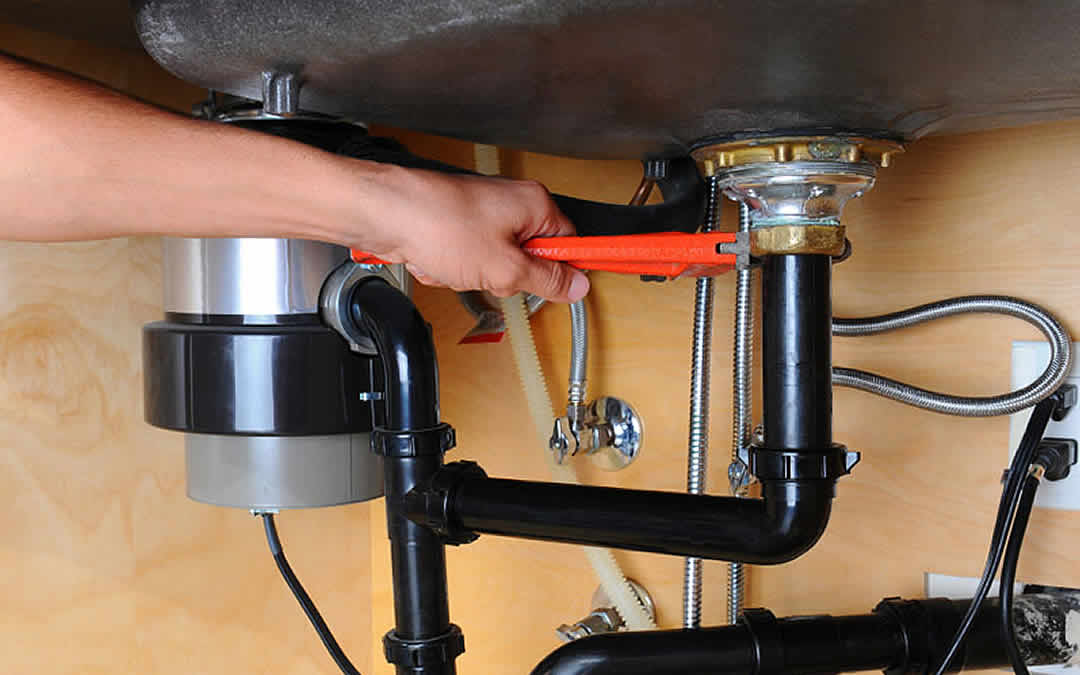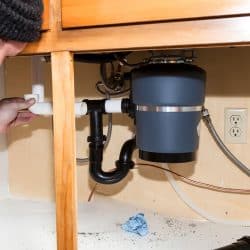Top Tips for Fixing a Leaking Waste Disposal Unit
Top Tips for Fixing a Leaking Waste Disposal Unit
Blog Article
Just about everyone may have their own assumption with regards to Why Is My Garbage Disposal Leaking From the Bottom?.

Garbage disposals are essential kitchen area home appliances that aid in taking care of food waste successfully. Nevertheless, a dripping waste disposal unit can be a discouraging and unpleasant trouble to manage. The good news is, numerous leakages can be fixed quickly with a few easy actions. In this write-up, we will certainly talk about just how to repair a leaking waste disposal unit efficiently.
Introduction
Garbage disposals are installed under kitchen area sinks and are designed to shred food waste right into smaller items, allowing it to go through the pipes system conveniently. While these gadgets are normally trusted, leakages can occur over time because of wear and tear, loosened connections, or damages to the unit.
Step-by-Step Guide to Repairing a Dripping Waste Disposal Unit
Turn Off the Power
Before attempting any type of repairs, make certain that the power to the waste disposal unit system is switched off to prevent the danger of electrical shock.
Situate the Leak
Determine the precise place of the leak and establish the cause
Tighten Links
Use a wrench to tighten up any kind of loosened connections between the disposal system and the plumbing system.
Change Seals or Gaskets
If the leak is due to used seals or gaskets, remove the old parts and change them with new ones.
Patching Fractures or Holes
For splits or openings in the disposal unit, usage epoxy or an ideal patching product to secure the broken location.
Determining the Resource of the Leak
Before trying to deal with a leaking garbage disposal, it is essential to identify the source of the leakage. This can normally be done with aesthetic examination or by carrying out basic examinations.
Visual Examination
Examine the garbage disposal system carefully for any kind of signs of water leak. Pay attention to areas around seals, gaskets, and link points.
Evaluating for Leakages
One way to examine for leaks is by running water through the disposal system and checking for any type of visible signs of leak.
Common Reasons For Leaks in Rubbish Disposals
Worn Seals and Gaskets
Seals and gaskets play an important role in preventing water from dripping out of the garbage disposal. Gradually, these elements can degrade, causing leaks around the disposal system.
Loose Links
The connections between the waste disposal unit and the pipes system can come to be loose in time, causing water to leak out throughout procedure.
Cracks or Holes in the Disposal Device
Physical damage to the garbage disposal, such as splits or openings in the real estate, can also lead to leaks.
Tools and Products Needed for Dealing With a Dripping Garbage Disposal
Before starting the fixing procedure, collect the essential devices and materials, consisting of a screwdriver, adjustable wrench, plumbing technician's putty, replacement seals or gaskets, and epoxy or patching material for repairing splits or holes.
Checking the Waste Disposal Unit After Repair Work
Once the repair work is complete, evaluate the garbage disposal by running water with it to make certain that the leakage has here actually been fixed.
Preventive Upkeep Tips to Avoid Future Leakages
To avoid future leakages, it is necessary to perform routine upkeep on your waste disposal unit. This consists of maintaining it clean, preventing placing non-food items or hard items down the disposal, and periodically looking for leakages or various other problems.
Conclusion
In conclusion, dealing with a dripping waste disposal unit is a reasonably uncomplicated procedure that can be finished with fundamental tools and materials. By complying with the steps described in this short article and exercising preventive upkeep, you can keep your waste disposal unit in good working problem and stay clear of costly repair services in the future.
HERE’S HOW TO FIX YOUR GARBAGE DISPOSAL
WHAT TO DO IF SOMETHING IS STUCK IN YOUR GARBAGE DISPOSAL
If the impeller won’t turn, there’s probably something stuck in the disposal. It could be a steak bone or peach pit, although plumbers report pulling all sorts of inappropriate objects out of disposals, such as bottle caps or aluminum foil. Make sure power to the disposal is off, and look inside to see if you can see the source of the jam.
Never stick your fingers in a disposal. Pull out anything you see with tongs or pliers.
If the disposal still won’t work, it may be time to call a plumber or consider buying a new disposal. GEM Plumbing & Heating is here for all of your garbage disposal needs.
WHAT TO DO IF YOUR GARBAGE DISPOSAL DRAIN IS CLOGGED
Take everything out from underneath your sink and put a bucket or other container under your disposal to catch any water that drains out. Disconnect your disposal from the power supply. If it’s plugged into a wall outlet, unplug it. If it’s hardwired into an electrical box, go to the electrical panel and turn off the breaker for the disposal. Pour ¼ cup of baking soda into the drain, followed by ½ cup of white vinegar. Give the solution a few minutes to fizz and do its work. Look into the disposal with a flashlight to see if you can see an object that might be causing the clog. If you see it, remove it using tongs or pliers. MORE TIPS ON DEALING WITH A CLOGGED GARBAGE DISPOSAL
Never use drain cleaner in a garbage disposal. It can damage the plastic parts inside the disposal. You can also be splashed with the caustic liquid while working to clear the clog. Beware! Never stick your fingers into a garbage disposal. Trust us — not a good idea. In many instances, your dishwasher drains through your garbage disposal. This allows the disposal to grind any large food particles that may be drained out of your dishwasher. There are some jurisdictions, however, where the plumbing code prohibits such a connection. WHAT TO DO WHEN YOUR DISHWASHER DRAINS THROUGH THE DISPOSAL
Run some water in the sink so your plunger has at least a ½-inch of water to create a seal and plunge vigorously up and down several times. You may need to repeat this several times. Run hot water down the drain to clear any residue that remains.

Hopefully you liked our section about Why Is . Thanks a lot for taking the time to read through our short article. Appreciated our article? Please share it. Help others locate it. Thank you for your time. Visit again soon.
Explore Now Report this page